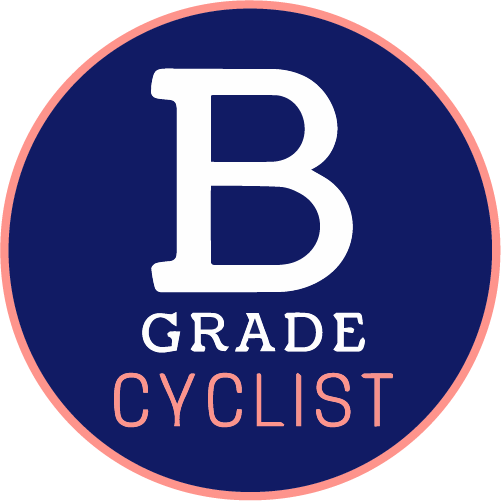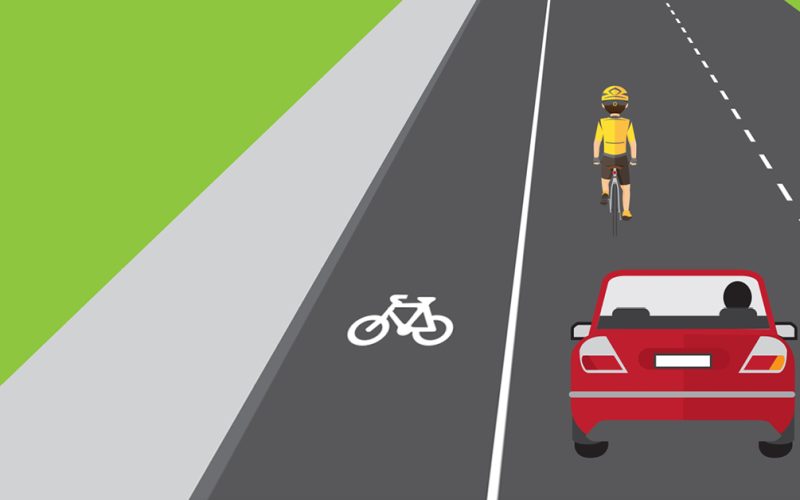A recent viral video (since deleted from social media) from the NSW South Coast shows a motorist driving on a shared path abusing two cyclists riding on the road alongside him. “Use the f—ing bike track, you dumb c—,” yells the motorist.

That driver has since been charged by police (in a sweet twist of fate, it turns out the cyclists were off-duty policemen), but comments about the video by individuals and media outlets alike have demonstrated just how poorly understood are the NSW laws on bike lanes.
“Use the f–king bike lane” is a refrain cyclists commonly hear from drivers. The problem is, most of the time what the driver refers to is not actually a “bike lane”, and the cyclist is not required to ride in it. Below are some surprising examples that look like bike lanes, but aren’t:



Even on a busy multi-lane road, this is not a bike lane:
So if these aren’t bicycle lanes, what are? What is a bike lane in NSW, and when do cyclists have to use one?
The law in NSW
Let’s look at the law. In NSW, cyclists are legally required by the Road Rules to ride in a “bicycle lane” unless it is impracticable to do so.
As the note to rule 247(1) advises, let’s go to rule 153 to find out what, exactly, is a “bicycle lane”.
If your eyes glazed over at all that text, let us break it down for you.
Where a bike lane starts
A bicycle lane starts either with one of these signs:

…or where there’s a bicycle symbol and the word “LANE” written on the road:

Basically, if you don’t see the word “LANE” written somewhere, there’s no bike lane. No “LANE”, no lane. Easy.
So, this is a bike lane:

Many people see a bicycle symbol in the road shoulder and automatically assume it’s a bike lane. That’s incorrect. If it doesn’t come with the word “LANE”, it’s not a bicycle lane and cyclists don’t have to use it.
Hence, this is NOT a bike lane:

Even if it’s painted green, separated from the road and has a sign opposite that says “No Left Turn from Bicycle Lane”, it still might not actually be a bike lane, like this example from King Street, Sydney CBD:
Firmly in the category of “things that are not bike lanes” are pedestrian-cyclist shared paths (like the one in the video mentioned in the introduction), footpaths and off-road bike paths.
Where a bike lane ends
A bike lane ends at one of these signs:

…or where there’s a bicycle symbol and the word “LANE END” written on the road. It also ends at an intersection or a dead-end.
That means that after a bike lane ends, a cyclist is not required to use a road shoulder even if there’s a bicycle symbol painted there. There has to be the word “LANE” indicating the start of a new bicycle lane.
When is it “impracticable” to use the bicycle lane?
Now that we’ve established what a bike lane is, when is a cyclist required to use it?
Rule 247 says a bicycle rider must use a bicycle lane “unless it is impracticable to do so”. The Road Rules give no guidance about what “impracticable” means, so it’s a matter of legal interpretation and ultimately up to the courts to decide.
I can’t give you legal advice about when it is or isn’t “impracticable” to use a bicycle lane. I can, however, give you my personal opinions, which I would be prepared to argue to a police officer or a magistrate if need be (i.e., don’t sue me if you get booked for following this next bit).
In my opinion, it’s impracticable to use a bicycle lane when:
- There’s an obstacle blocking it, like parked cars or roadworks signage;
- There’s dangerous debris in it, like tree branches or broken glass; or
- There are parked cars in or next to it, turning the bike lane into a “door zone”.
In these situations, I would argue it’s lawful to leave the bicycle lane temporarily and use the main traffic lane until you have passed the relevant obstacle.

Footnote: no bicycles allowed
It almost goes without saying that the following signs should be obeyed:


If you see one of these signs on a section of road, you can’t ride past there – bike lane or not.
For example, it’s illegal to ride on the road surface of the Sydney Harbour Bridge. Use the separated bicycle path along the bridge’s western side.
Summary: what’s a bike lane in NSW?
I’ve written before that one of the ways cycling changes you is that it makes you acutely aware of the road rules. So let’s sum up what we’ve learned:
- If there’s a bicycle symbol and the word “LANE”, it’s a bicycle lane. Cyclists on that stretch of road must use the bike lane unless impracticable to do so;
- Anything else is not a bicycle lane. Cyclists have the right to ride on the road there, unless a “no cycling” sign applies.
A question still remains. Cyclists may not legally be required to use shared paths, bike paths and other non-compulsory bicycle infrastructure, but those options are safer than riding on the road, right? So why do cyclists often choose not to use them? This article by Michael O’Reilly explains why bicycle riders might sometimes avoid using bike lanes.
Know someone who might benefit from learning more about bike lanes? Share this article with them using one of the buttons below.



